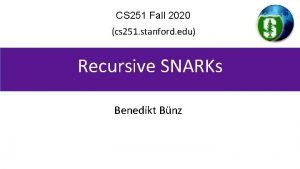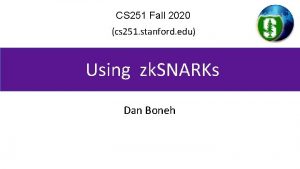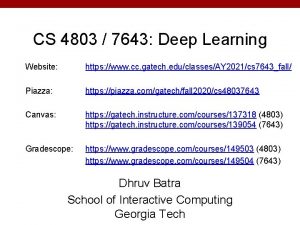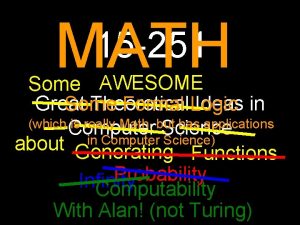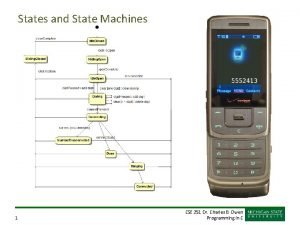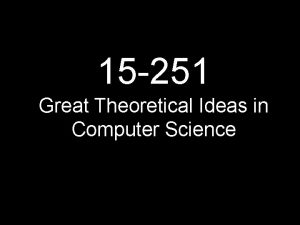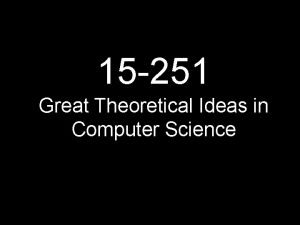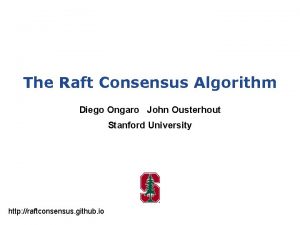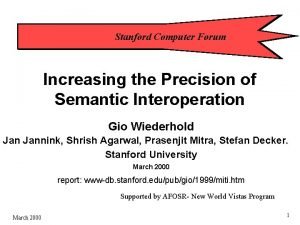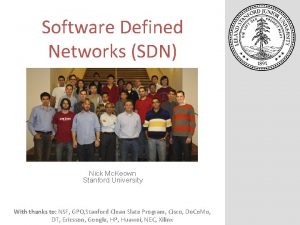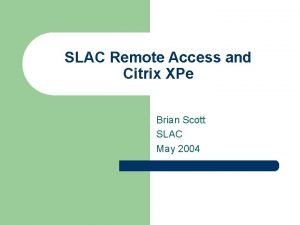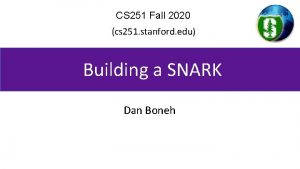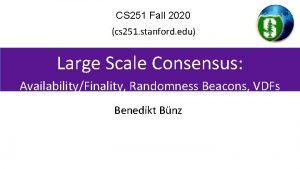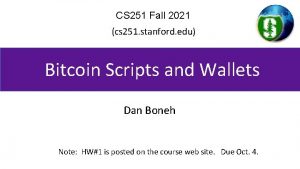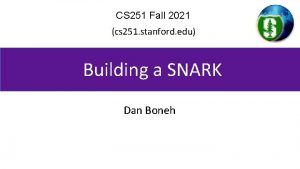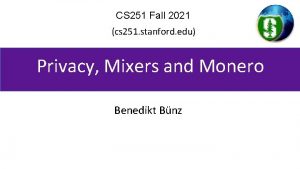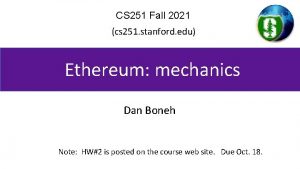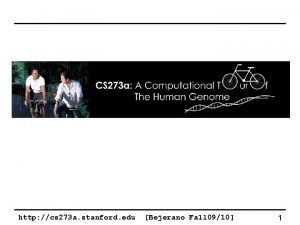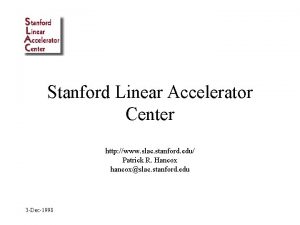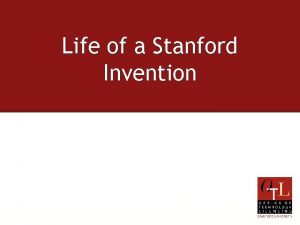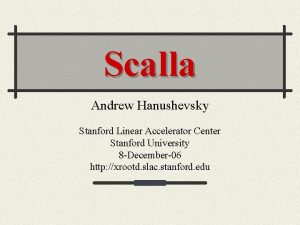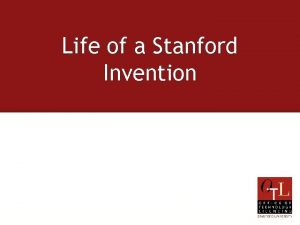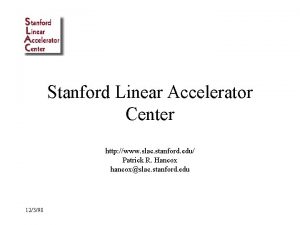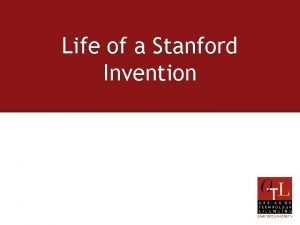CS 251 Fall 2020 cs 251 stanford edu





























![A simple PCP-based SNARK [Kilian’ 92, Micali’ 94] A simple PCP-based SNARK [Kilian’ 92, Micali’ 94]](https://slidetodoc.com/presentation_image_h2/7a379ac40284ec7e46d95911ace37408/image-30.jpg)






- Slides: 36

CS 251 Fall 2020 (cs 251. stanford. edu) Using zk. SNARKs Dan Boneh

Recap: high-level goals • Private transactions on a public blockchain • Blockchain scaling, such as proof-based Rollup • Privately prove compliance, such as a private proof of solvency

Recap: non-interactive proof systems • (for NP)

Non-interactive Proof Systems • (for NP)

proof systems: properties (informal) accept or reject

SNARK: succinct argument of knowledge • note: if SNARK is zero-knowledge, then called a zk. SNARK

zk. SNARK applications

Blockchain Applications Scalability: • SNARK Rollup (zk. SNARK for privacy from public) Privacy: Private Tx on a public blockchain • Confidential transactions • Zcash Compliance: • Proving solvency in zero-knowledge • Zero-knowledge taxes

… but first: commitments Cryptographic commitment: emulates an envelope data Many applications: e. g. , a DAPP for a sealed bid auction • Every participant commits to its bid, • Once all bids are in, everyone opens their commitment

Cryptographic Commitments Syntax: a commitment scheme is two algorithms • commit(msg, r) � commitment string • verify(msg, com, r) �accept or reject anyone can verify that commitment was opened correctly

Commitments: security properties

Example 1: hash-based commitment •

Example 2: Pedersen commitment •

An interesting property •

Confidential Transactions

Confidential Tx (CT) Goal: hide amounts in Bitcoin transactions. will not hide Tx fee ⇒ businesses cannot use for supply chain payments

Confidential Tx: how? Bitcoin Tx today: Google: 30 � Alice: 1, Google: 29 8 bytes The plan: replace amounts by commitments to amounts Google: com 1 � Alice: com 2, Google: com 3 where com 1 = commit(30, r 1), com 2 = commit(1, r 2), com 3 = commit(29, r 3) 32 bytes

Now blockchain hides amounts 3 bd 6 e 25 fqd ae 23 b 452 d 8 8 c 528 ad 9 fa 187 b 6 cf 54 a 8 How much was transferred ? ? ?

The problem: how will miners verify Tx? Google: com 1 � Alice: com 2, Google: com 3 com 1 = commit(30, r 1), com 2 = commit(1, r 2), com 3 = commit(29, r 3) • CT arithmetic circuit

The problem: how will miners verify Tx? • (need short proof! ⇒ zk. SNARK) Tx:

Optimized proof? • Easy to check with Pedersen: set com = com 1/com 2⋅com 3⋅g. Tx. Fees prove that com = commit(0, r) remaining proof is ≈400 bytes

Zcash (simplified)

Zcash Goal: fully private payments … like cash, but across the Internet challenge: will governments allow this ? ? ? Zcash blockchain supports two types of TXOs: • transparent TXO (as in Bitcoin) • shielded (anonymized) a Tx can have both types of inputs, both types of outputs

Addresses and TXOs H 1, H 2, H 3: cryptographic hash functions. (1) shielded address: random sk �X, sk needed to spend TXO for address pk pk = H 1(sk) (2) shielded TXO (note) owned by address pk: - TXO owner has (from payer): value v and r �R - on blockchain: coin = H 2( (pk, v) , r) (commit to pk, v) pk: addr. of owner, v: value of coin, r: random chosen by payer

The blockchain coins coin 1 coin 2 coin 3 ⋮ nullifiers nf 1 nf 2 ⋮ just Merkle root … append only tree (coins are never removed) transparent-TXOs similar to Bitcoin UTXO set explicit list: one entry per spent coin

Transactions: an example owner of coin = H 2( (pk, v) , r) wants to send coin funds to: (v = v’ + v’’) (Tx input) shielded transp. pk’, v’ pk’’, v’’ (Tx output) step 1: construct new coin: coin’ = H 2((pk’, v’) , r’) by choosing random r’ �R (and sends v’, r’ to owner of pk’) index of coin step 2: compute nullifier for spent coin nf = H 3(sk, in Merkle tree ) nullifier nf is used to “cancel” coin (no double spends) key point: miners learn that some coin was spent, but not which one!

Transactions: an example • The Zcash circuit from Merkle proof

What is sent to miners •

Summary • Tx hides which coin was spent ⇒ coin is never removed from Merkle tree, but cannot be double spent thanks to nullifer note: prior to spending coin, only owner knows nf: nf = H 3(sk, index of coin in Merkle tree ) • Tx hides address of coin’ owner • Miners can verify Tx is valid, but learn nothing about Tx details.
![A simple PCPbased SNARK Kilian 92 Micali 94 A simple PCP-based SNARK [Kilian’ 92, Micali’ 94]](https://slidetodoc.com/presentation_image_h2/7a379ac40284ec7e46d95911ace37408/image-30.jpg)
A simple PCP-based SNARK [Kilian’ 92, Micali’ 94]

A simple construction: PCP-based SNARK •

Converting a PCP proof to a SNARK Merkle 1 hash output accept or reject Problem: interactive

Making the proof non-interactive The Fiat-Shamir heuristic: • public-coin interactive protocol ⇒ non-interactive protocol public coin: all verifier randomness is public (no secrets) msg 1 r msg 2 choose random bits r accept or reject

Making the proof non-interactive • generate msg 1 generate msg 2 Thm: this is a secure SNARK assuming H is a random oracle

Are we done? Simple transparent SNARK from the PCP theorem • Use Fiat-Shamir heuristic to make non-interactive • We will apply Fiat-Shamir in many other settings The bad news: an impractical SNARK --- Prover time too high Better SNARKs: next lecture! Goal: Time(Prover) = O(|C|)

END OF LECTURE Next lecture: How to build an efficient SNARK
 Stanford cs251
Stanford cs251 Cs 251 stanford
Cs 251 stanford Cs251
Cs251 Highwire stanford edu
Highwire stanford edu Cs 7643 deep learning
Cs 7643 deep learning Task level parallelism
Task level parallelism Cs61c fall 2020
Cs61c fall 2020 Edu.sharif.edu
Edu.sharif.edu 15-251
15-251 Oh não consintas tristezas dentro do teu coração
Oh não consintas tristezas dentro do teu coração Anupam saxena
Anupam saxena Legge 251 2000
Legge 251 2000 Fy22 milper message 20-251
Fy22 milper message 20-251 Aae 251
Aae 251 Cs 251
Cs 251 15-251
15-251 15 251
15 251 Edu.ro programe scolare 2020-2021
Edu.ro programe scolare 2020-2021 Stanford web security course
Stanford web security course Smartmart stanford
Smartmart stanford Stanford prison experiment cells
Stanford prison experiment cells Diego ongaro raft
Diego ongaro raft Ndo stanford
Ndo stanford Stanford research park map
Stanford research park map Stanford hci
Stanford hci Stanford human computer interaction
Stanford human computer interaction Stanford hci
Stanford hci Stanford gps
Stanford gps Cs223 stanford
Cs223 stanford Stanford computer forum
Stanford computer forum Stanford
Stanford Sat 10 practice test kindergarten
Sat 10 practice test kindergarten Sat 10 kindergarten
Sat 10 kindergarten Stanford torus
Stanford torus Stanford sdn
Stanford sdn Stanford citrix
Stanford citrix Daniel tammet iq
Daniel tammet iq
